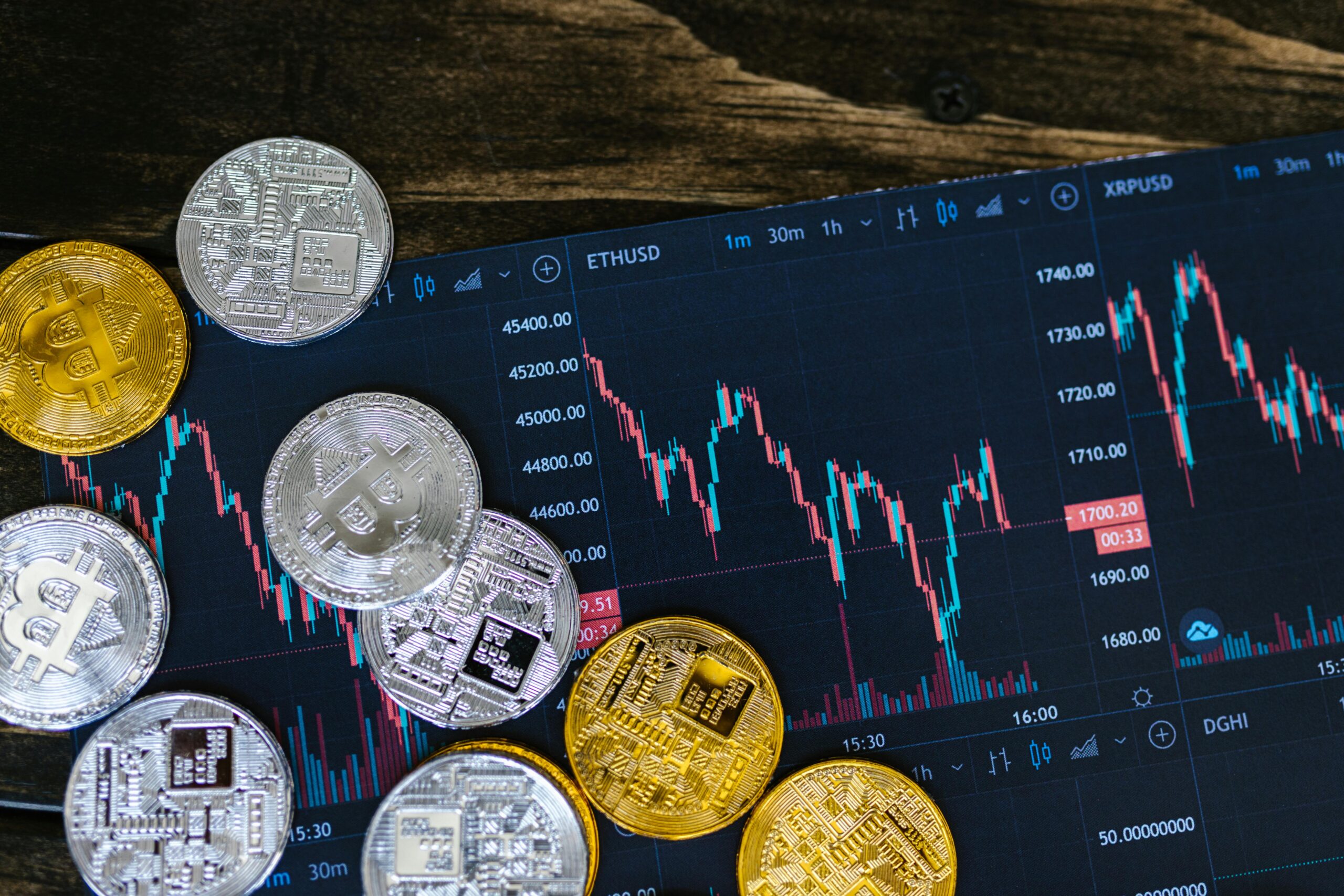Blockchain in Supply Chain Finance: Revolutionizing Efficiency and Transparency
Introduction
Supply chain finance is crucial for the smooth operation of global trade, but it often faces challenges like inefficiencies, fraud, and lack of transparency. Enter blockchain technology—a disruptive force promising to revolutionize how supply chains operate. But how exactly can blockchain transform supply chain finance? Let’s explore the potential impacts and benefits of this innovative technology.
What is Blockchain in Supply Chain Finance?
Blockchain in supply chain finance refers to the application of blockchain technology to enhance the efficiency, transparency, and security of financial transactions and operations within supply chains. By leveraging a decentralized and immutable ledger, blockchain can address many of the traditional issues faced in supply chain finance.

Key Benefits of Blockchain in Supply Chain Finance
1. Enhanced Transparency
One of the standout features of blockchain is its ability to provide transparent and tamper-proof records. Each transaction on the blockchain is recorded in a decentralized ledger, which is accessible to all participants in the supply chain.
- Immutable Records: Once data is entered into the blockchain, it cannot be altered, providing a reliable history of transactions.
- Real-Time Tracking: Stakeholders can track the movement of goods and payments in real-time, improving visibility.
2. Improved Efficiency
Blockchain can streamline many aspects of supply chain finance, reducing the need for intermediaries and manual processes.
- Automated Processes: Smart contracts can automate financial transactions and processes, reducing delays and errors.
- Faster Transactions: Blockchain enables quicker settlement of payments and financing compared to traditional methods.
3. Reduced Fraud and Risk
Fraud and errors can be costly in supply chain finance. Blockchain’s secure and transparent nature helps mitigate these risks.
- Fraud Prevention: Blockchain’s immutability makes it difficult for fraudulent activities to alter transaction records.
- Error Reduction: Automated processes and real-time updates help minimize human errors.
How Blockchain Works in Supply Chain Finance
1. Tracking and Verification
Blockchain allows for the tracking of goods and financial transactions throughout the supply chain. Each step is recorded on the blockchain, providing a clear and verifiable path from the manufacturer to the end consumer.
- Proof of Origin: Ensures that products are authentic and meet quality standards.
- Audit Trails: Provides a comprehensive audit trail for all transactions.
2. Smart Contracts
Smart contracts are self-executing contracts with the terms directly written into code. In supply chain finance, they automate various financial agreements and processes.
- Automatic Payments: Payments are automatically triggered based on predefined conditions being met.
- Dispute Resolution: Dispute resolution is streamlined through predefined contract terms.
3. Decentralized Finance (DeFi)
Blockchain technology supports decentralized finance (DeFi), which can offer alternative financing options for supply chain participants.
- Alternative Financing: Access to decentralized lending and borrowing options.
- Liquidity Solutions: Enhanced liquidity options through decentralized exchanges.
Real-World Applications
Several companies and industries are already implementing blockchain to transform supply chain finance.
1. IBM and Maersk’s TradeLens
IBM and Maersk’s TradeLens platform uses blockchain to improve the efficiency of global shipping and logistics. It provides real-time visibility and helps streamline documentation and compliance processes.
- Streamlined Documentation: Digitizes and automates shipping documents.
- Enhanced Visibility: Provides a single, transparent view of the supply chain.
2. De Beers’ Tracr
De Beers’ Tracr platform uses blockchain to track the provenance of diamonds, ensuring their authenticity and ethical sourcing.
- Conflict-Free Certification: Verifies that diamonds are sourced ethically and responsibly.
- Transparency: Provides an immutable record of the diamond’s journey from mine to market.
3. Walmart’s Food Safety Initiative
Walmart uses blockchain to enhance food safety by tracking the journey of food products from farm to store.
- Rapid Traceability: Quickly trace the source of food products in case of contamination.
- Improved Safety: Enhances overall food safety through better tracking and transparency.
Challenges and Considerations
While blockchain offers numerous benefits, it’s essential to consider the challenges associated with its implementation in supply chain finance.

1. Integration with Existing Systems
Integrating blockchain with existing supply chain systems can be complex and costly.
- Compatibility Issues: Ensuring that blockchain technology is compatible with existing IT infrastructure.
- Cost of Implementation: High initial costs for setting up blockchain systems.
2. Scalability
Blockchain networks can face scalability issues, especially with high transaction volumes.
- Transaction Speed: Ensuring that the blockchain network can handle large volumes of transactions efficiently.
- Network Congestion: Avoiding delays due to network congestion.
3. Regulatory and Legal Considerations
The regulatory environment for blockchain and cryptocurrencies is still evolving, which can create uncertainties.
- Compliance: Ensuring that blockchain implementations comply with local and international regulations.
- Legal Framework: Navigating the evolving legal landscape for blockchain technology.
Future Outlook
The future of blockchain in supply chain finance is promising, with ongoing advancements and increasing adoption. As technology matures and regulatory frameworks evolve, we can expect even greater improvements in efficiency, transparency, and security.
1. Increased Adoption
More industries and companies are likely to adopt blockchain as its benefits become more widely recognized.
- Broader Applications: Expansion of blockchain use cases beyond supply chain finance.
- Industry Standards: Development of industry standards for blockchain implementation.
2. Technological Advancements
Continued advancements in blockchain technology will address current limitations and enhance its capabilities.
- Scalability Solutions: Development of solutions to address scalability issues.
- Interoperability: Improved interoperability between different blockchain networks.
Conclusion

Blockchain technology has the potential to revolutionize supply chain finance by enhancing transparency, efficiency, and security. While there are challenges to overcome, the benefits make it a compelling solution for modernizing supply chains. As the technology continues to evolve, its impact on supply chain finance will likely grow, offering new opportunities and solutions for businesses around the world.
FAQs
How does blockchain enhance transparency in supply chain finance?
Blockchain provides an immutable and transparent ledger, allowing all participants to view and verify transactions in real-time.
What are smart contracts, and how do they benefit supply chain finance?
Smart contracts are self-executing contracts with terms written into code, automating financial processes and reducing the need for intermediaries.
Can blockchain reduce fraud in supply chain finance?
Yes, blockchain’s immutability and transparency help prevent fraud by making it difficult to alter transaction records.
What are some real-world examples of blockchain in supply chain finance?
Examples include IBM and Maersk’s TradeLens, De Beers’ Tracr, and Walmart’s Food Safety Initiative.
What challenges are associated with implementing blockchain in supply chain finance?
Challenges include integration with existing systems, scalability issues, and regulatory and legal considerations.



